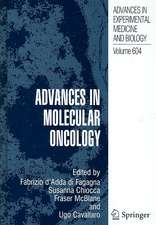Experimental Hepatocarcinogenesis
Editat de M.B. Roberfroid, V. Préaten Limba Engleză Paperback – 18 ian 2012
Preț: 373.47 lei
Preț vechi: 393.13 lei
-5% Nou
Puncte Express: 560
Preț estimativ în valută:
71.49€ • 77.68$ • 60.09£
71.49€ • 77.68$ • 60.09£
Carte tipărită la comandă
Livrare economică 21 aprilie-05 mai
Preluare comenzi: 021 569.72.76
Specificații
ISBN-13: 9781461282648
ISBN-10: 1461282640
Pagini: 336
Ilustrații: 332 p.
Dimensiuni: 170 x 244 x 18 mm
Greutate: 0.54 kg
Ediția:Softcover reprint of the original 1st ed. 1988
Editura: Springer Us
Colecția Springer
Locul publicării:New York, NY, United States
ISBN-10: 1461282640
Pagini: 336
Ilustrații: 332 p.
Dimensiuni: 170 x 244 x 18 mm
Greutate: 0.54 kg
Ediția:Softcover reprint of the original 1st ed. 1988
Editura: Springer Us
Colecția Springer
Locul publicării:New York, NY, United States
Public țintă
ResearchDescriere
The meeting on experimental hepatocarcinogenesis which took place in Spa, Belgium at the end of May 1987 was the Second European Meeting. About 100 scientists, mostly from Europe but also from the United States, met there for three days in a very friendly atmosphere to exchange knowledge and ideas on experimental and human liver carcinogenesis. The main topics discussed during the meeting included general reviews on hepatocarcinogenesis, experimental models of hepa tocarcinogenesis, biology of hepatocarcinogenesis, and in vitro studies in hepatocarcinogenesis. They are all covered by the various chapters of this proceedings volume, which reflects the present state of knowledge in this important field of cancer research. The final aim of that research is to understand the basic mechanisms of carcinogenesis. The liver offers a parti cularly interesting tool to reach such a goal. Indeed, its biochemistry, its morphology, and its physiology are very diverse, but relatively well known. Various protocols have been developed to produce hepatocellular carcinomas or other malignant tumors. Their appearance is most often preceded by phenotypically altered foci and nodules which have been isolated and characterized. The major cell populations of normal, neoplastic, and malignant livers have been cultivated.
Cuprins
Experimental and Human Liver Carcinogenesis: Cause and Modulation.- Hepatocarcinogens.- The Induction of Localized Tumors by Carcinogens Implanted into the Liver.- Two Stage Theory of Carcinogenesis: a critical review Introducing the Concept of Modulation.- Modulating Factors of Hepatocarcinogenesis.- Sex Hormones as Modulators of Liver Tumor Development.- Liver Cancer and Viruses.- Morphological Alterations During Liver Carcinogenesis.- Metabolic Zonation of the Liver.- Cellular Differentiation during Neoplastic Development in the Liver.- Histochemical Analysis of Hepatocarcinogenesis.- Cell Proliferation, Cell Death and Liver Carcinogenesis.- Cell Proliferation and Hepatocarcinogenesis.- Initiation of Chemical Hepatocarcinogenesis: Compensatory Cell Proliferation versus Mitogen Induced Hyperplasia.- Cell Death (Apoptosis) in Normal and Preneoplastic Liver Tissue.- Biochemical Alterations During Liver Carcinogenesis.- A Study of the Activities of Carbohydrate Metabolizing. Enzymes and the Levels of Carbohydrate Metabolites and Amino Acids in Normal Liver and in Hepatocellular Carcinoma.- The Expression of Cell Surface Receptors in Regenerating and Neoplastic Liver Tissue.- Cholesterol Metabolism during Cell Proliferation.- Mechanism of the Inhibition of Liver Carcinogenesis Promotion by S-adenosyl-L-methionine.- Nuclear and Genetic Alterations During Liver Carcinogenesis.- Long Term Effect of Diethylnitrosamine (DEN) on the Production of Micronuclei in Precancerous Rat Liver.- Nuclear Alterations during Hepatocarcinogenesis: Promotion by 2-acetylaminofluorene.- Cytogenetic and Genetic Alterations during Hepatocarcinogenesis.- Role of Oncogenes in Hepatocarcinogenesis.- In Vitro Studies in Liver Carcinogenesis.- Separation and Biochemical Characterization of Rat Liver Parenchymal Cell Subpopulations.- Growth Control of Hepatocytes, their Immortalization and Transformation by Transforming Genes of Polyoma Virus and of SV40 Virus.- Changes in Hepatocyte TGF? Receptors and Gene Expression during Normal and Neoplastic Liver Growth.- Regulation of Carbohydrate Metabolism in a Glycogenstoring Liver Cell Line.- Techniques in Measuring DNA Synthesis and Mitosis Induced by Tumor Promoters in Hepatocytes Primary Cultures.- Conclusions.- Concluding Remarks.- Contributors.















